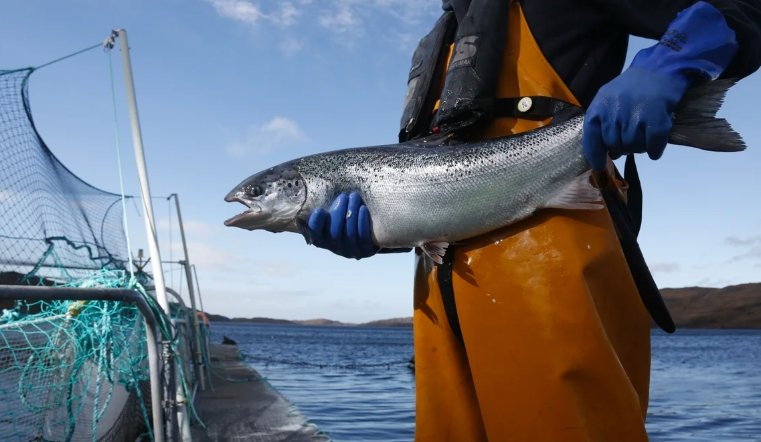A devastating jellyfish species, notorious for its lethal impact on Norway’s salmon industry, has reached Scotland, sparking significant concern and demands for immediate intervention. The string jellyfish, which has already decimated millions of salmon in Norwegian sea farms, is now causing severe damage to Scotland’s aquaculture sector.
Threat Reaches Scottish Waters
The arrival of the string jellyfish in Scotland has been reported at several locations, leading to the death of over 200,000 farmed salmon. Two Scottish farms, one around Skye and another near Muck, have been particularly affected. The Fish Health Inspectorate revealed that the Skye farm lost 70,000 salmon, while the Muck farm saw 160,000 fatalities.
This crisis mirrors the situation in Norway, where officials had to exterminate infected stocks to control the spread. The jellyfish’s sting damages the fish’s skin, eyes, and gills, leaving them vulnerable to infections and diseases, often resulting in a slow and painful death.

Calls for Stricter Regulations
Dale Vince, founder of the Green Britain Foundation, highlighted the urgent need for better oversight and regulation within the fish farming industry. He stated, “This jellyfish attack is the latest example of how the fish farming industry is failing to cope with environmental challenges. We routinely see them using the land and sea as a sewer for their toxic business, and now nature is fighting back.”
Environmental activists have long criticized the industry for its environmental impact, including pollution and welfare concerns. The recent jellyfish invasion has intensified these criticisms, with campaigners urging the Scottish government to enhance regulation and enforcement.
Industry Response
A spokesperson for Salmon Scotland defended the industry’s practices, attributing the jellyfish blooms to rising sea temperatures. They pointed out that similar blooms had been detected in 2022 and 2023.
“There are about 70 million farm-raised salmon in Scotland’s waters at any time,” the spokesperson said. “Survival rates are at a four-year high following nearly £1 billion investment in fish health and welfare, including measures to mitigate any impact of microscopic jellyfish blooms.”
Wider Environmental Concerns
Chris Packham, a television presenter and environmental campaigner, emphasized the broader environmental implications. He warned, “Climate breakdown and biodiversity loss are accelerating at an unprecedented rate – actively driven by industries like Scottish salmon farming that use and abuse our precious landscape and unambiguously damage the environment and multiple ecosystems and the wildlife that lives there – not just in Scotland but around the world.”
The Scottish government’s Rural Affairs and Islands Committee recently conducted a formal inquiry into the industry. While stopping short of recommending a ban on its expansion, the committee expressed concerns over the slow progress in improving regulation and enforcement.
Impact of Climate Change
Climate change plays a significant role in the rising challenges faced by the salmon farming industry. With water temperatures increasing, the conditions become more favorable for jellyfish blooms, further threatening the industry. According to the committee, millions of fish die each year due to these rising temperatures, exacerbating the already critical situation.
Key Points of the Inquiry:
- The committee recognized the environmental and welfare issues plaguing the industry.
- Recommendations were made for more stringent regulations and enforcement.
- The committee highlighted the urgent need for the industry to adapt to the changing climate conditions.
Future Outlook
The string jellyfish’s impact is a stark reminder of the fragile balance within marine ecosystems and the profound effects of climate change on aquaculture. As the industry grapples with these challenges, the calls for more sustainable practices and stringent regulatory frameworks are becoming increasingly urgent.
Efforts to mitigate the damage caused by jellyfish blooms and other environmental threats must be intensified. The industry’s future hinges on its ability to adapt to these evolving challenges while minimizing its ecological footprint.


















